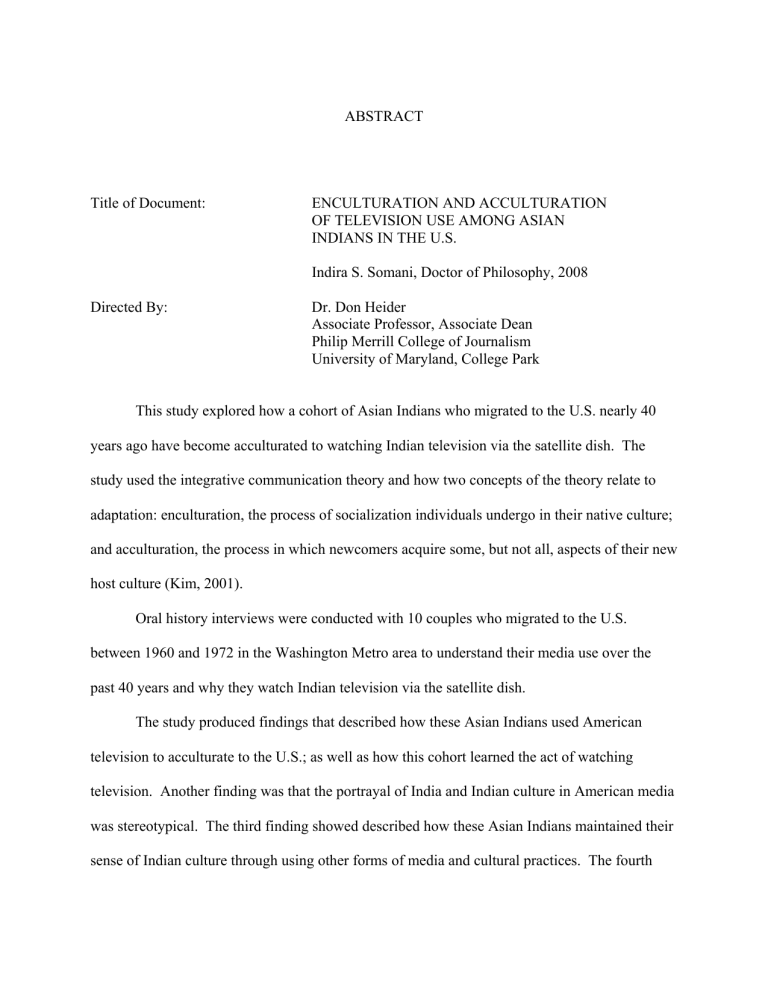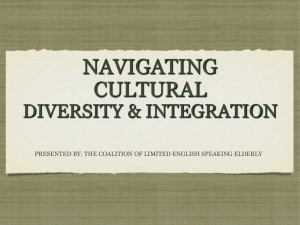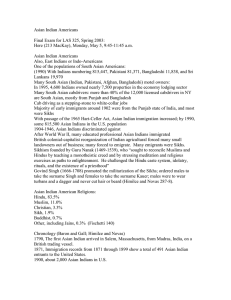ABSTRACT Title of Document: ENCULTURATION AND

ABSTRACT
Title of Document: ENCULTURATION AND ACCULTURATION
OF TELEVISION USE AMONG ASIAN
INDIANS IN THE U.S.
Indira S. Somani, Doctor of Philosophy, 2008
Directed By: Dr. Don Heider
Associate Professor, Associate Dean
Philip Merrill College of Journalism
University of Maryland, College Park
This study explored how a cohort of Asian Indians who migrated to the U.S. nearly 40 years ago have become acculturated to watching Indian television via the satellite dish. The study used the integrative communication theory and how two concepts of the theory relate to adaptation: enculturation, the process of socialization individuals undergo in their native culture; and acculturation, the process in which newcomers acquire some, but not all, aspects of their new host culture (Kim, 2001).
Oral history interviews were conducted with 10 couples who migrated to the U.S. between 1960 and 1972 in the Washington Metro area to understand their media use over the past 40 years and why they watch Indian television via the satellite dish.
The study produced findings that described how these Asian Indians used American television to acculturate to the U.S.; as well as how this cohort learned the act of watching television. Another finding was that the portrayal of India and Indian culture in American media was stereotypical. The third finding showed described how these Asian Indians maintained their sense of Indian culture through using other forms of media and cultural practices. The fourth
finding demonstrated how Asian Indians discovered a new way to stay connected to their culture, particularly in real time as they watched Indian programming via the satellite dish. The fifth finding was that this cohort used American television as a filter through which they judged
Indian television. Overall, these Asian Indians were found to believe Indian programming was copying Western culture.
The study concluded with analysis of how this cohort changed its media habits as media technology itself changed over time. The study showed how diasporic communities form through media use, as well as how audiences also become fragmented and individualized in their choice of media. It uncovered the ways how these Asian Indians became skilled television viewers and could distinguish between good and bad programming.









